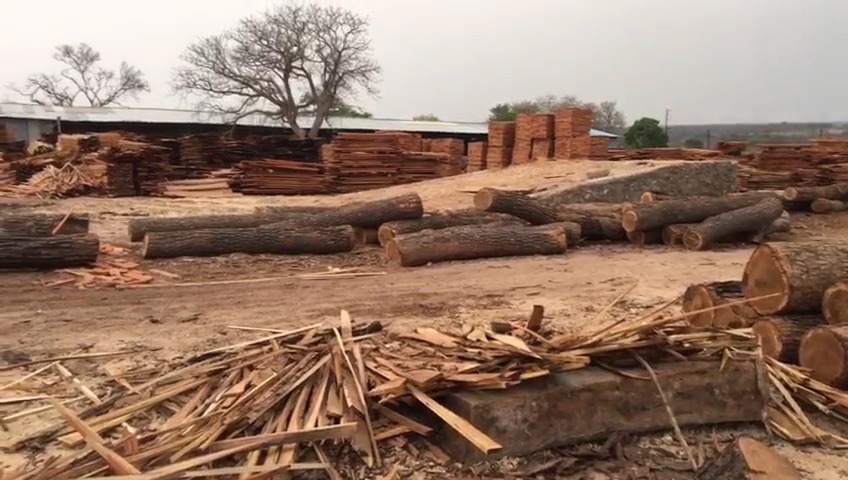Private-sector models can instil essential innovation, entrepreneurship and resilience to African conservation
Illegal timber is estimated to account for 50 to 90 percent of wood harvested from Amazonia, central Africa and Southeast Asia . Globally, the illegal timber is worth as much as $150 billion annually . As global stocks of valuable, slow-growing hardwoods are depleted, the powerful international syndicates that benefit from this exploitation push deeper and deeper into the world’s last standing forests.
At the very moment international leaders renewed their climate and biodiversity commitments in New York last month, I was hiding, thousands of miles away, covertly filming a timber yard. I was deep inside an African Protected Area, and this was almost certainly an illegal logging operation.
As I watched, tractor-loads of century-old hardwoods were offloaded into a makeshift yard. Vast piles of sliced timber provided silent testament to the scale of destruction; there was an acrid stench of burning wood shavings. Later, as the light faded around me, I put my phone away and quietly approached a group of workers at the edge of the yard. Their eyes were bloodshot and watery from smoke, heat and fatigue. From behind us, the sound of a mechanised saw shattered the evening quiet. I asked who owned the mill. They said they didn’t know – they were just paid per tree they delivered. I asked how much. They told me a figure in local currency; it amounted to 50 cents.
Hundreds of years of growth, tens of tonnes of stored carbon and a life-support system for innumerable forms of biodiversity, torn down. To bring 50 cents of value into the local economy, before being shipped to meet foreign demand, and sold for hundreds of dollars. The people I spoke to were not to blame: they’re in no position to demand a safe, sustainable and fairly paid job. When my questions began to make them and me uneasy, I thanked them and left.
In stark contrast to the scenes I witnessed, in the fading light of Wednesday evening, I know that private-sector approaches can work for the good of communities and landscapes in Africa.
Take one iconic example: the conservation of rhinos. Whereas populations of rhinos have been wiped out from vast swathes of their native ranges in public lands, the numbers on well-managed private reserves have shown continual increases, in some cases growing as much as 10% per year . Private-sector approaches to conservation finance are working too. One in particular has massive latent potential: the voluntary carbon market. Already, leading companies are offsetting the carbon emissions from their operations by funding the protection and restoration of African landscapes. Yet another approach is the use of pioneering public-private partnerships. African Parks is a not-for-profit that has radically disrupted historic approaches to African conservation; it’s working in partnership with governments to deliver some of the most remarkable development and conservation results on the planet. Proactive governments like Malawi, Rwanda and Zambia are increasingly embracing these opportunities.
The burden and opportunity of protecting and using Africa’s extraordinary natural capital should be shared by public and non-public actors. International donors have to look beyond traditional bilateral models; using public finance to seed and support private-sector enterprise can yield huge returns on investment. Conservation NGOs must go beyond traditional roles, in which they facilitate and assist – they must also take accountability for the ownership and management of land. Philanthropists can do the same, and go even further, by looking for investment opportunities that deliver both an environmental and financial dividend.
Every single element of the situation I witnessed last week – from the men who stood facing me at the entrance of the smoking timber-yard, to the irreplaceable assets that lay behind them – shows the need to radically and rapidly enhance our current approaches.
It’s hard not to feel frustrated, even angry. Not so much at the failure of current approaches: more at the failure of us all to take additional opportunities that already exist; at how misplaced ideological concerns about private sector involvement in public goods and conservation are preventing critical finance and resources from being deployed in disappearing landscapes.
But anger and frustration alone will not lead to change. Instead, the evidence of existing outcomes must be the basis for strengthened resolve and energy for change. Change that harnesses the varied and productive set of solutions that the private sector – with innovation, professionalism and dynamism – can help deliver.
by Douglas Flynn, SYSTEMIQ’s conservation and biodiversity lead

